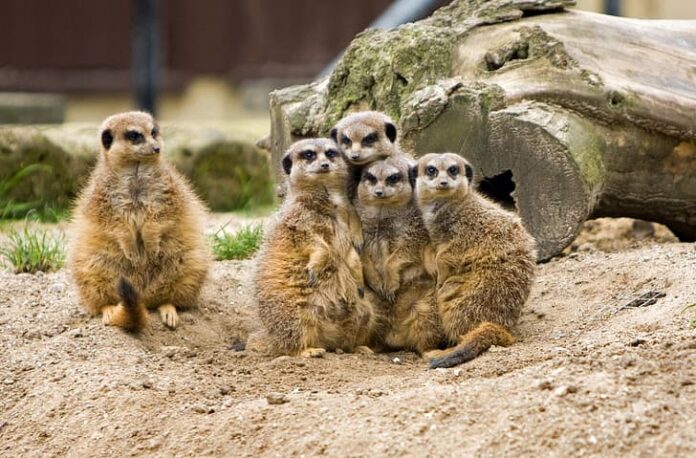Eusocial animals are animals that live together with overlapping generations within a colony of adults. In that colony, everyone is cooperative when it comes to brood care of both the offspring and other individuals. At the same time, there is a clear division in the labor field for both reproductive and non-reproductive groups. Eusocial animals are common only in certain crustaceans, insects, and mammals. What do you know about some of the big colonies of eusocial animals? Take a look and 10 of them in our life below, and don’t forget to share your thoughts.
1Eusocial Crustaceans
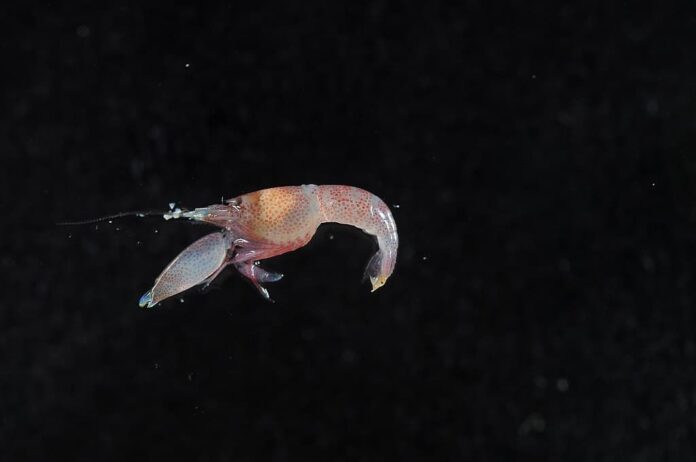
Since when did crustaceans live in colonies, right? Actually, there are only a few crustaceans that live in groups of closely related individuals in tropical reefs and sponges. All of them are families of snapping shrimps, and the detail is below.
Snapping Shrimp

There are hundreds of snapping shrimp species, and some of them live in colonies just like ants. This is the only marine invertebrate taxon with species that live in large eusocial groups. Each group consists of several hundred individuals dominated by one or several queen-like females. The colonies are kin-based from the offspring of the queen and a single male, and they live within host sponges. In the colonies, snapping shrimps can interfere with sonar and underwater communication which is very interesting. As a matter of fact, these shrimps are considered a major source of noise in the ocean.
The special thing about snapping shrimps is that they are capable of producing a loud snapping sound, hence the name. More than this, one of their claws does not have pincers at the end like most shrimps at all. Instead of that, they have a pistol-like joint that allows the “hammer” part to move backward into a right-angled position. When released, the claw snaps into the outer part of the claw which causes a gigantic powerful wave of bubbles. Those bubbles are strong enough to stun larger fish or break small glass jars.
2Eusocial Insects

It is not uncommon to hear about eusocial insects because there are several species that live in large groups. I include only the largest groups of eusocial insects, and I am sure that you know most of them. A little hint, they all have queens.
Ant
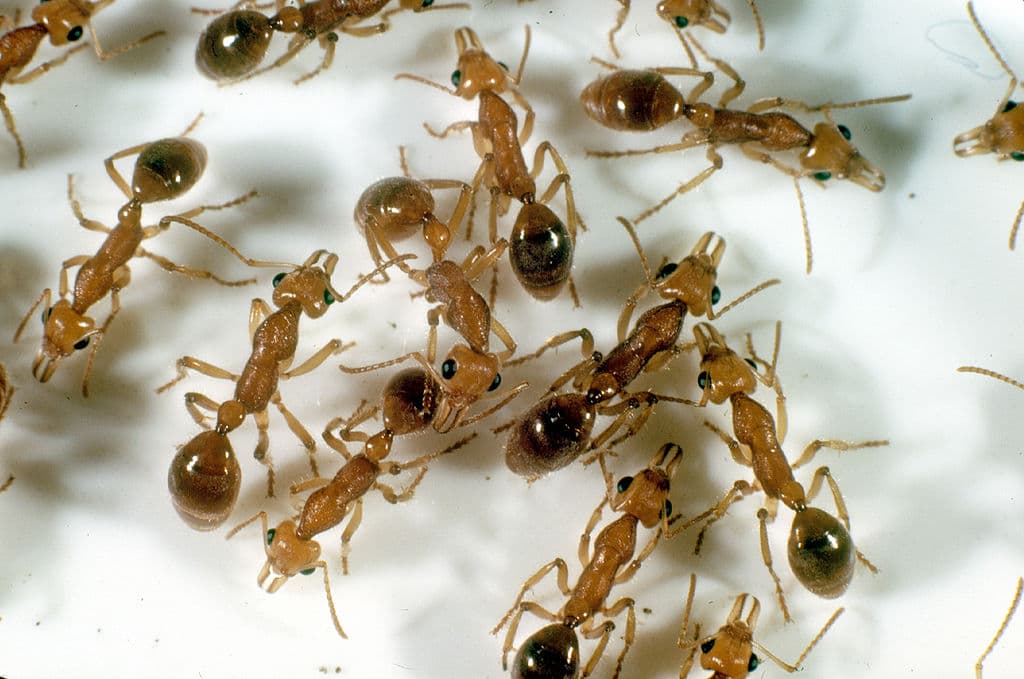
With the mention of eusocial animals, ants have to be on the list. Ants have a very clear vision when it comes to the duty and responsibility of each group in the colonies. Simply put, they live and work together for the prosperity of the whole colony. This hard-working insect ticks every box in the true definition of eusocial animals. First of all, there are overlapping generations where parents and offspring live together inside the nest. There is a caste system that divides into workers, soldiers, foragers, drones, and the queen. And most importantly, everyone in the colony contributes to building the nest and caring for the brood.
Speaking of nests, there are a series of underground chambers that connect to each other and the surface. There are small tunnels that offer access from the outside to the colonies, and the details inside are just extraordinary. On top of that, researchers have identified an ant “supercolony” that stretches over 4000 miles across Europe. This one enormous colony consists of billions of ants that connect thousands of colonies with many different ant species. We are familiar with the fact that ants are social animals, but the supercolony information here is very new. Who knows how large can an ant colony be in the future, right?
Ambrosia Beetle

This is species of beetle that lives in deep tunnels inside eucalyptus trees, and they are also among eusocial animals. It begins when a female starts to build her empire all by herself for more than six months. She does so by drilling an entrance hole into the tree and then lays her eggs inside more than a year later. After hatching, the beetles help their queen mother build extensive galleries of tunnels in the inner deadwood of eucalyptus trees. Those galleries are not only for food production but also for safety. There are tiny entrances in the form of eucalyptus resin that sticks out of the tree like a spout.
The sole purpose of their colony is to build and maintain their queen’s labyrinthine world while they are unable to reproduce. There could be more than 300 different colonies in one eucalyptus tree alone. Even more interesting, there have been records on ambrosia beetle’s self-sacrificing habits for their colonies as well. The soldiers are so devoted to the queen that they would sacrifice their opportunity to reproduce in society. At the same time, living within tunnels can cause them to lose their claws or leg segments. The thing is that their forfeiture is worth it because they help to pass their genes and expand their colonies.
Aphid
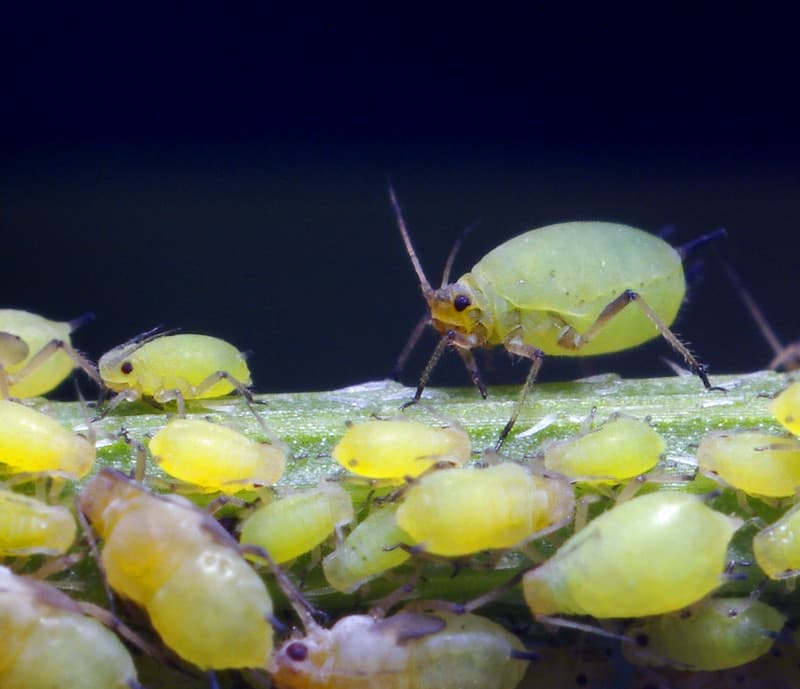
A female aphid forms her home in a tiny gall on the cottonwood trees. Each tiny gall that each female aphid creates is both a home and a source of food to them. It is also where these eusocial animals begin their colonies as well. When it is long enough, one aphid colony can consist of multigenerational family groups living together in one gall. The galls have only a single exit hole, with just the right size for a soldier aphid to exit for patrolling duty. So when someone or something disturbs the gall, the soldiers will come out to attack.
There could be thousands of aphids in one tiny gall, so the soldiers take their job very seriously to protect everyone inside. Depending on the species, some aphids use their plant-sucking mouth parts to attack intruders. Meanwhile, some other species use horns on their heads to deter the attackers no matter if they are humans or insects. When out of defending and patrolling duties, the soldiers also play non-defensive altruistic roles like gall repairing and housekeeping. Soldier aphids are extremely brave, and they do whatever it takes for the benefit of their colony mates.
Bee
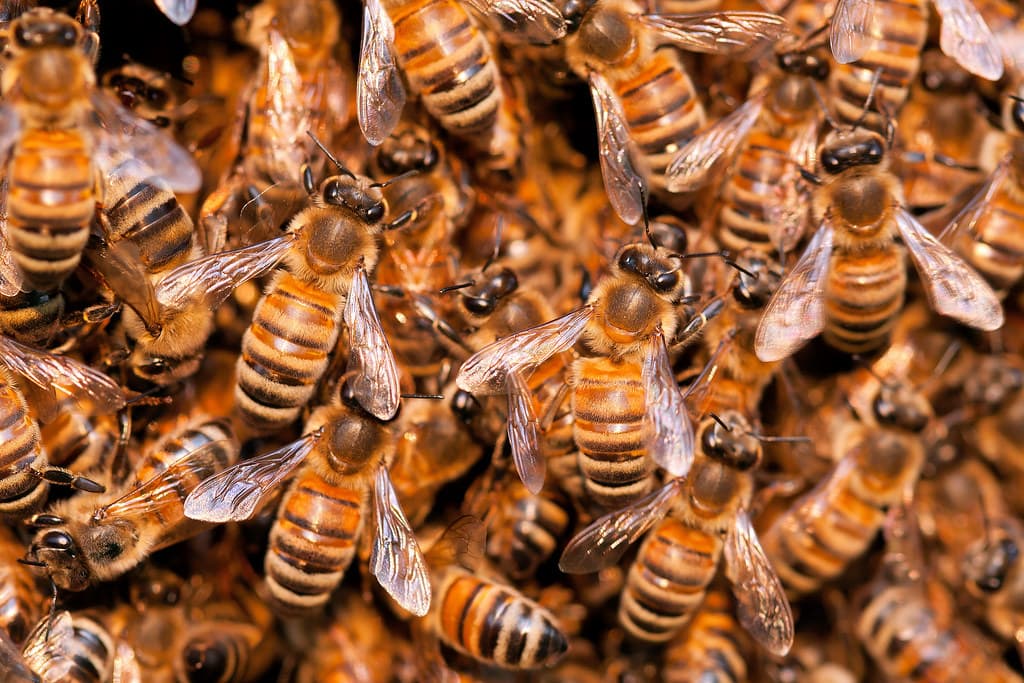
Bees are one of the eusocial animals that live together as a group, and they are true sociality animals. Just like the definition goes, there is an overlapping of generations and there is a cooperative brood care in the colonies. At the same time, there is also a reproductive division of labor in the group. Each beehive has a queen that is responsible for laying eggs while the worker bees take care of them. There could be hundreds of thousands of bees in one colony, especially the ones in the forests or jungles.
The worker bees are the busiest members in the colonies, and they have short complicated lives. Despite being workers, there are clear divisions of labor for specific types of work in the hive. The youngest worker bees (0 – 3 weeks) work in the nest while older worker bees (3 – 7 weeks) work outside. Inside the hive, worker bees build honeycombs, clean out dirty honeycombs, and receive food from incoming foragers. As for older bees, they forage for nectar, pollen, and water, guard the hives, and remove corpses nearby. All of the systems lead to successful colonies that never stop growing.
Termite
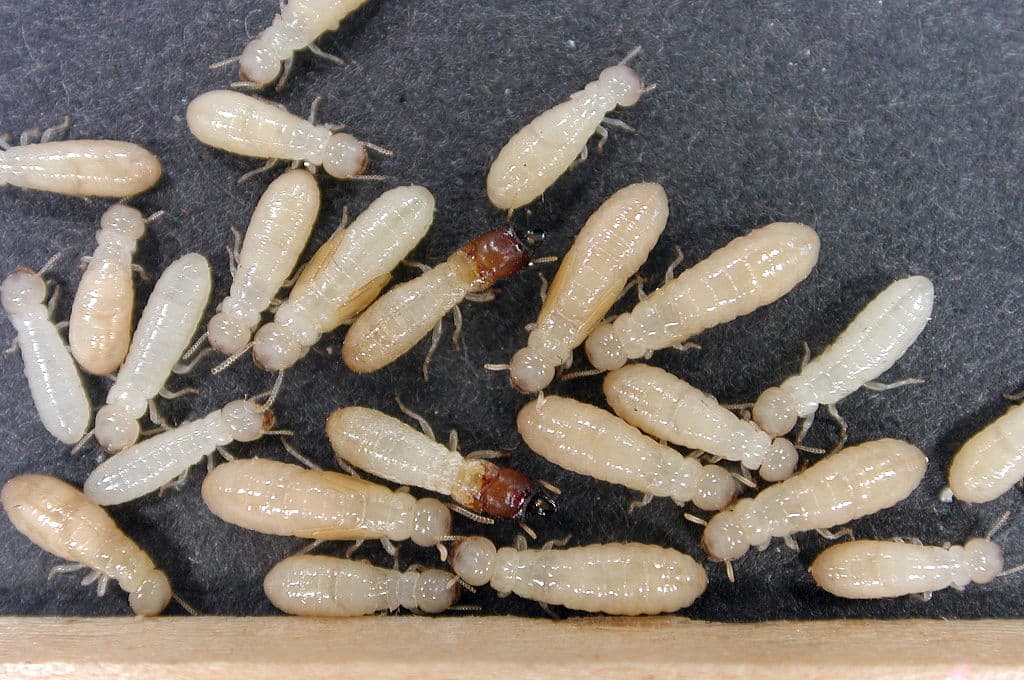
There are around 2,000 termite species, and all of them are social insects that raise their young as a group. A termite colony begins after the winged king and queen finished their mating flights. After fertilization, the king and queen will find a good place to build a nest and then shed their wings. The king and queen termites are responsible for the reproduction of the entire colony, and some can last for several decades. A termite queen has an enlarged abdomen that accommodates her increased egg-laying capacity which allows her to lay millions of eggs annually. Fertilized queen will lay her eggs that will later hatch and develop into three different castes that work for the colony. Juvenile hormones in termite eggs influence caste differentiation such as the number of soldiers and workers.
Each caste has a distinctly different physical appearance, and those include alates (primary or secondary reproductive termites), soldiers, and workers. Alates are darker in color, and they are born with two pairs of wings for flying to establish new colonies. Soldiers are yellow-brown in color, and they have enlarged heads with large mandibles to use in combats. Workers are light yellow, and they are responsible for constructing chambers and tunnels, feeding, foraging, and grooming other termite castes. As silent destroyers, termites are very common both in the house and outside the house. These eusocial animals have the ability to chew through flooring, wallpaper, and wood without us noticing until it is too late.
Thrip
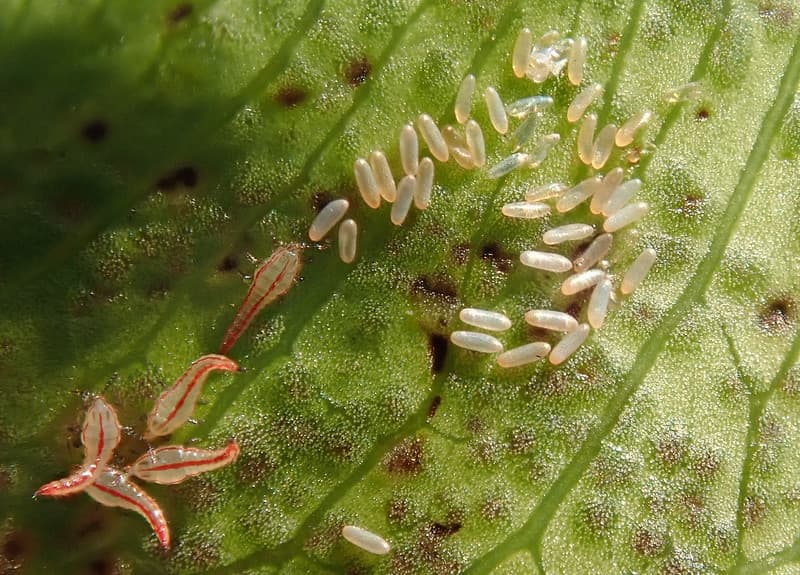
In the early growing season, female thrips arrive at an acacia plant and begin eating one of its leaf-like stems. The stem will slowly develop into a gall in a football-like shape around those female thrips. This simply creates a food-filled cavern in which she and all her offspring can live safely from predators. Some offspring develop large front legs that are armed with daggers pointing inward, making them soldiers and protectors of the home. These soldiers will never reproduce, and they will fight to death against invaders that wish to harm their home. Most of the invaders are the other thrips that cannot make homes of their own with special skills in stealing galls. Along with that, some other invaders are the predators to feed on the thrips. It is not easy for them, but they are so hard-working that they always thrive.
Wasp

Wasps can literally create their own paper to build their nests by chewing and spitting out pieces of bark. A drone (male wasp) has only one job, and it is to mate with the queen. After the drones fulfilled this mission, they will die shortly afterward. Young fertilized queens are the organisms that survive winter, and they emerge in spring to build new nests. The queen lays up to a dozen eggs, and she feeds them since after they hatch until they become workers. Those workers then forage for food, feed the new larvae, and defend the nest.
In later summer, the colony produces males and new queens so that they can fly away and mate. The young queens then find a place to hibernate before emerging in spring again. Meanwhile, the rest of the colony including the foundation queen, males, and workers die in winter. Only female wasps have stingers, and those stingers are actually modified egg-laying organs. People don’t like wasps, but they are ecologically and economically important organisms with their roles in pollinating crops and flowers. Since they feed on dead insects and flies, wasps are also very proficient at managing pest populations as well.
3Eusocial Mammals
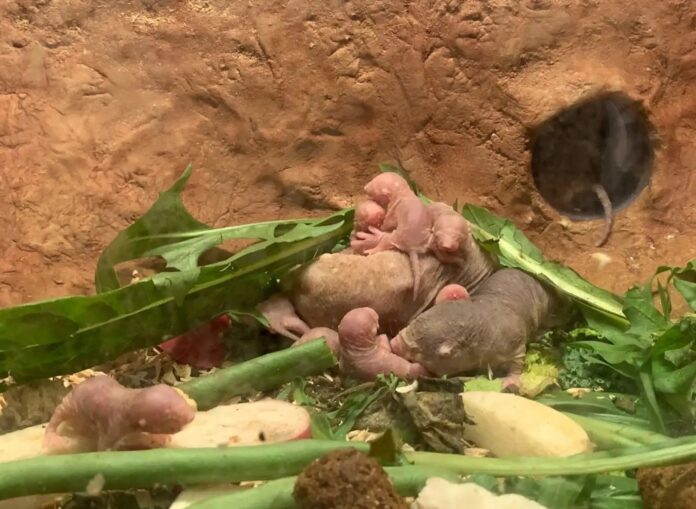
Humans are also eusocial mammals, but I do not include this obvious information in the list. There are a few interesting mammals that live together with multiple generations, and some of them also have queens. Let’s find out the differences between the insect queens and mammal queens below.
Damaraland Mole Rat
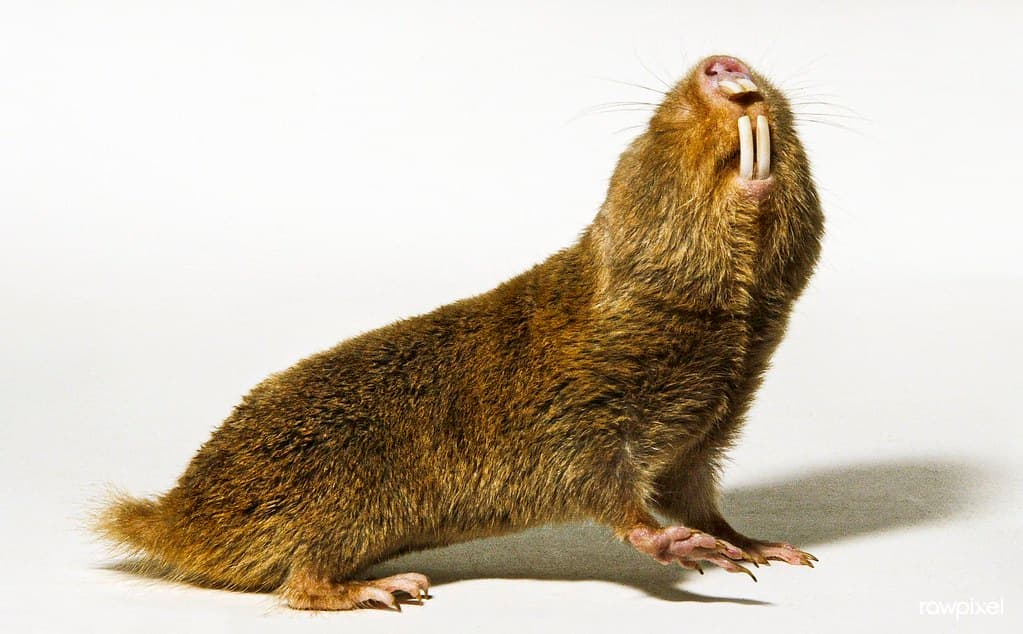
Many people talk about naked mole rats when it comes to eusocial animals, but they forgot about Damaraland mole rats. Looking similar to their cousins but bigger and hairier, Damaralands are burrowing rodents found in southern Africa. They live in networks of tunnels that can stretch up to 1 kilometer (0.62 miles) which they dig using their front teeth. Because these mole rats don’t have to come to the surface, they equip everything they need in their tunnels underground. Those include central nests, food storage chambers, and even latrines. More than that, their tunnels also develop their own microclimate that contains warm and moist air with low oxygen levels.
Each burrow system is occupied by a single colony of Damaraland mole rats with between 12 to 40 members. The main individuals are breeding pairs along with their non-reproductive offspring that are responsible for foraging and maintaining the tunnel system. Although small, their colony has a clear hierarchy where the breeding male is dominant followed by the breeding female, non-reproductive males and females. As extended families, one colony can comprise several generations which makes them one of the few eusocial mammals. In case the breeding female dies, the most surviving members will disperse to new locations and establish a new burrow system. The interesting thing is that non-reproductive individuals are capable of reproduction if they establish a colony of their own.
Dwarf Mongoose

Here you are looking at the smallest carnivores and the smallest mongoose in Africa. Dwarf mongoose use termite mounds are den sites, and there are at least 20 termite mounds within their territory. The unique thing about these eusocial animals is that they are nomadic, so they usually leave their den sites a lot. Each dwarf mongoose group consists of between 12 to 15 members, and they are matriarchally led by a dominant female. The dominant female and her mate initiate group moves, and they have first rights to food. Just like other females in eusocial groups, she is the only female that is allowed to breed. In fact, subordinate females’ offspring are not even allowed to survive.
On top of that, the group hierarchy is age-based and the youngest individuals have higher ranks than the older ones. This unusual arrangement is most likely to ensure that the young get sufficient food to expand the legacy of their group. So who is the soldier in the colony? This job belongs to the alpha male whose rank is behind the dominant female. He spends most of his time defending the territory and scanning for danger from atop a termite ground. As for foragers, the young mongoose will start to look for food when turn 6 months old. Despite all the clear roles, everyone in the group helps to raise the pups together.
Meerkat

Meerkats are one of the most fascinating eusocial animals that live and work together in a close-knit mob. The gang is led by an alpha pair, and the female is the most dominant. As eusocial animals, most members of the groups are either children or siblings of the alpha pair. These adorable mammals are extremely social animals, and they live in burrows that they dig using their long sharp claws. Each burrow can be 5 meters long with multiple entrances, rooms, and tunnels, and a mob can use up to 5 burrows at a time. Living underground helps keep the members safe from both heat and predators. Some mobs can be as big as 50 members while some have fewer members. Everyone participates in gathering food, keeping a lookout for predators, and taking care of the babies.
Each morning, the foragers of the mob emerge from the burrow and begin looking for food when the sun comes up. Meerkats use their keen sense of smell to locate their favorite food such as beetles, caterpillars, scorpions, and spiders. Meanwhile, several babysitters stay behind at the burrow to look after newborn pups. These babysitters often go all day without food to make sure that the pups are safe from predators and rival mobs. Along with that, sentry (watchers) will find a high point and scan the areas for predators like eagles, jackals, etc. If senses danger, a sentry will let out a high-pitched squeal to alert the rest of the mob. Meerkats are very tough, and they are also immune to venom as well which is super cool.
Naked Mole Rat
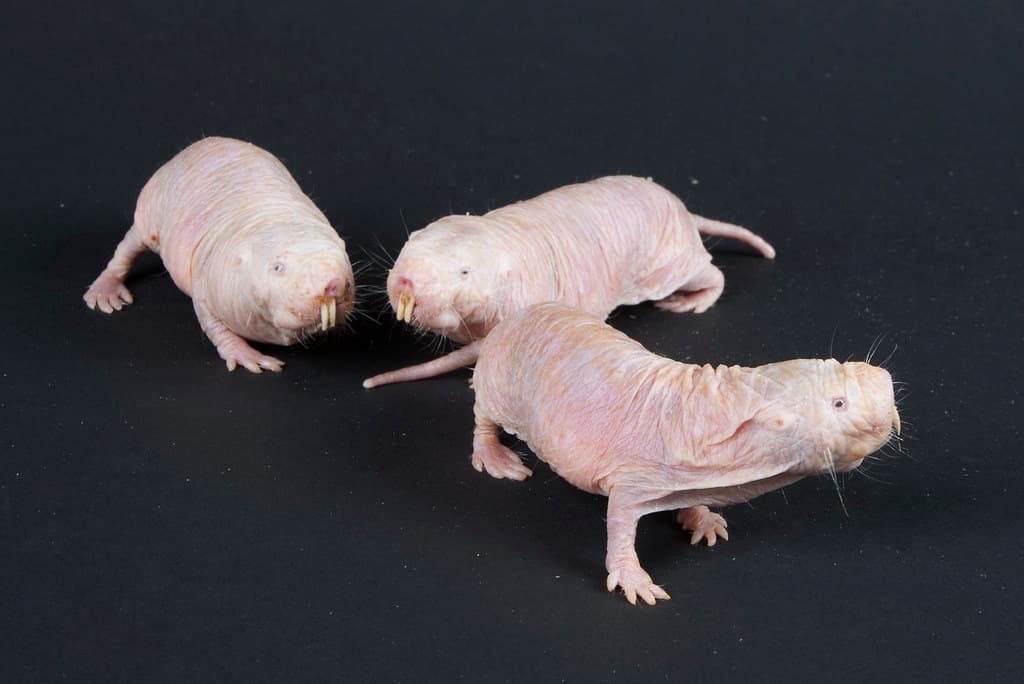
One of the most famous things about naked mole rats is that the queen is not born a queen. A naked mole rat queen is a strong female who fought her way to the top. She is the only individual that breeds, and she rules a colony that consists of between 20 to 300 individuals. The queen mates with one to three males, and the rest of the colony are soldiers and tunnelers. Naked mole rats are the first mammals to exhibit a structure where all females aren’t physically capable of reproducing. Almost hairless and blind, naked mole rats very unique eusocial animals that live underground. Naked mole rats live almost their entire lives in darkness underground, and they have a strong sense of smell and touch.
On top of that, these mammals can operate their front teeth separately just like a pair of chopsticks. They use their powerful jaws and large incisors to dig through hard-packed soil into impressive tunnel systems inside their burrows. Worker mole rats design and dig the burrows that include chambers for eating, nesting, raising young, and toilets. A single colony tunnel can be as far as 4 kilometers (2.5 miles) long, with a complex underground system. Despite being almost completely blind, naked mole rats can still protect their colony very well. If a predator (mostly snakes) tries to enter the tunnel, the soldiers will pile up to block the entrance. Those soldiers will fight, and in some cases they are killed and the snakes enter the burrow and eat the queen.
Related Post: Animal Kingdoms Ruled By Queens

